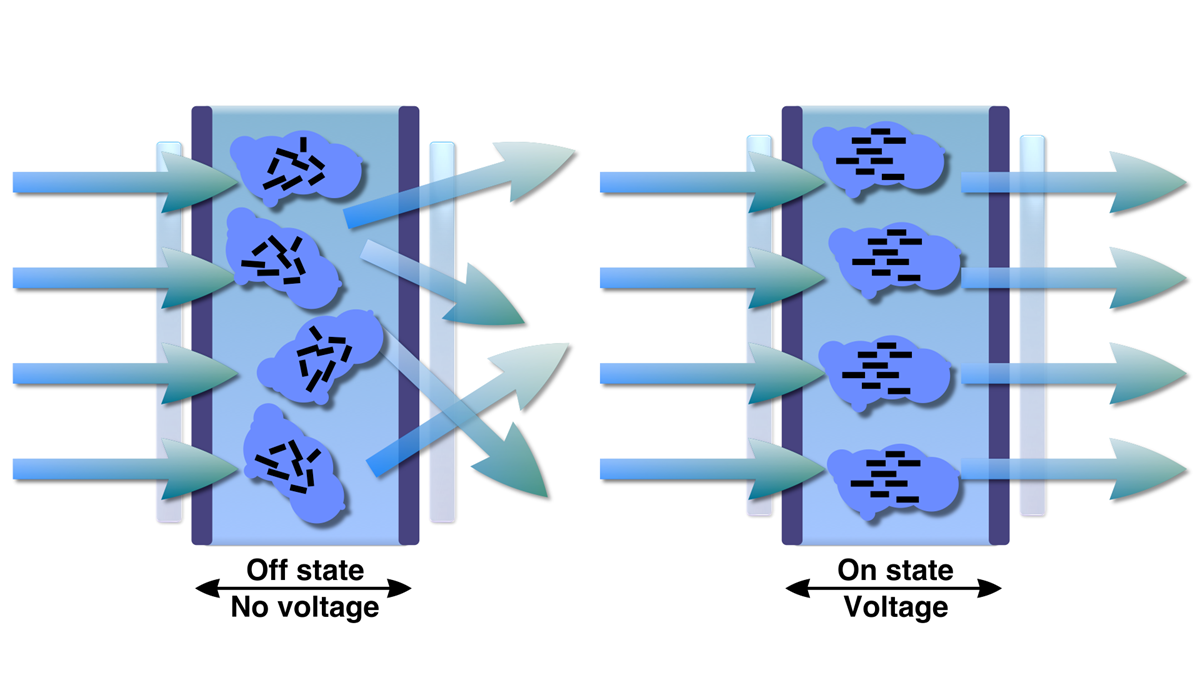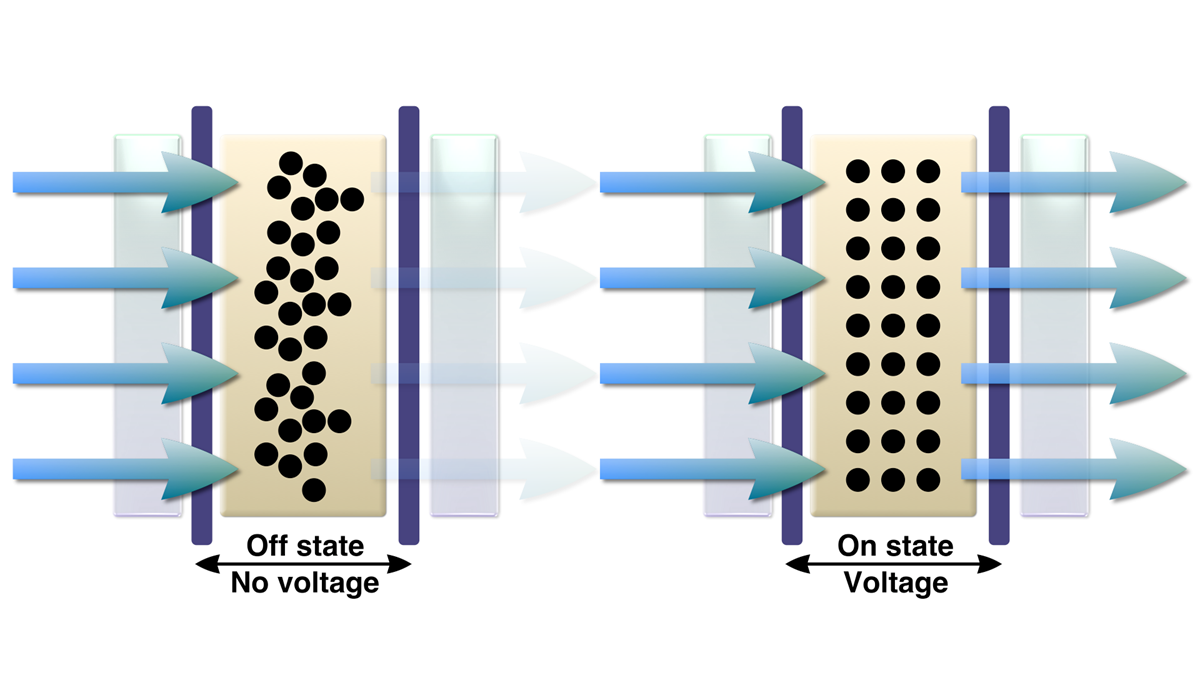PDLC (Polymer Dispersed Liquid Crystal) Smart Film
PDLC film can be found a dime a dozen on the Internet. Mostly in the form of a sheet that you attach/bond to the glass window. You then attach the “busbar” on top on both sides. Typically it is made with copper tape. They can be cut in any shape or form. Some also come in different colors.
PDLC is often constructed as a sandwich with PET film on both sides and a polymer with liquid crystals molecules in between. In the off state the LC is ordered randomly thus dispersing the light. As with many of these technologies the transparent state requires constant power/voltage applied.
PDLC is an on/off technology. Either it is clear or very hazed. Although there is some difference in clarity depending on how high voltage you apply.
SPD (Suspended Particle Device) Smart Film
SPD are constructed with microscopic light-absorbing particles dispersed in droplets within a film. The film is layered between glass sheets. As with PDLC the “off” state is stopping light because of the particles suspended in random. When a voltage is applied the particles aligns and light can pass.
The tint is bluish.
SPD technology can be gradually changed from clear to fully blocked.
EC (Electrochromatic) Smart Film
EC like SPD also controls the light transmission through the glass. It changes between a clear, and slightly yellowish tint, to a blocking and bluish hue. There are two major differences between SPD and EC Smart Film.
1. The switching process is very slow. Ranging from seconds through several minutes. This depends on the size of the glass window. The change of transparency changes from the edges and inwards.
There has been recent development to speed up the switching and also to remove the yellow tint.
2. EC only need power when switching transparency states or levels. This is obviously a very beneficial property.
Recent advances in electrochromatic materials pertaining to transition-metal hydride electrochromics have led to the development of reflective hydrides, which become reflective rather than absorbing, and thus switch states between transparent and mirror-like.
Other recent developments has been around using nano structures.
Noyark is specialized in manufacturing low haze PDLC switchable smart film, either in the form of a sheet or roll. Our polymer dispersed liquid crystal smart film has high clarity, your transparency and privacy at the Flip of a Switch.
Post time: Jul-17-2019

